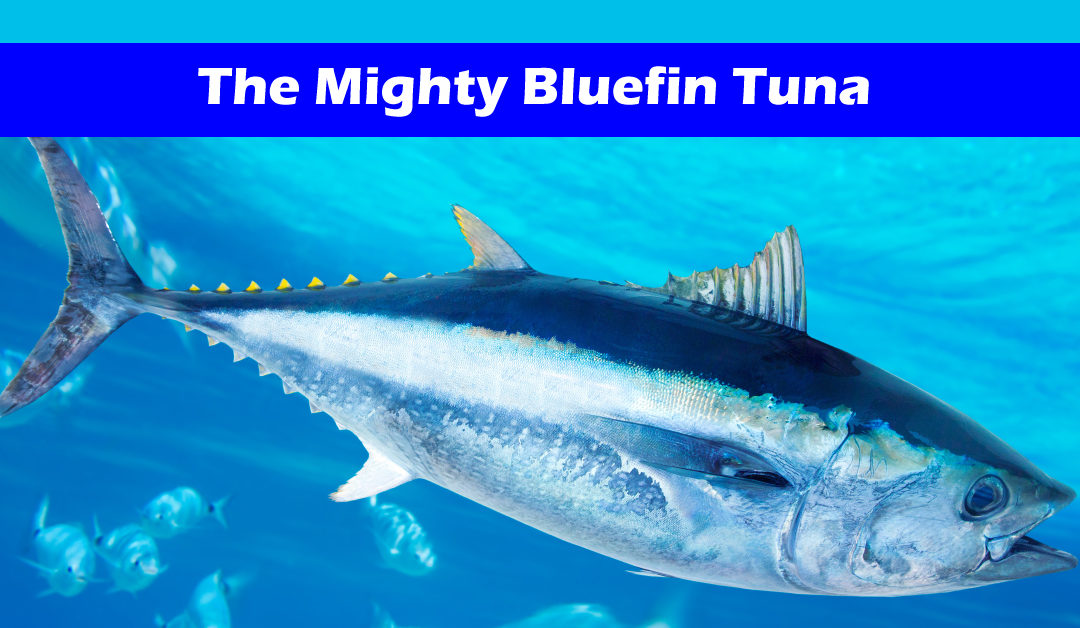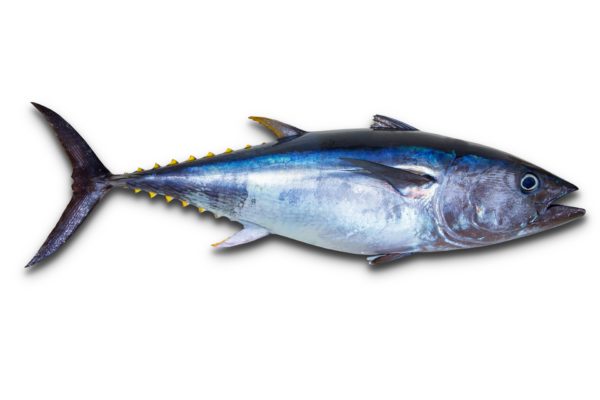In honor of World Tuna Day which is observed annually on May 2nd, I’d like to share some fascinating biological facts, as well as conservation issues surrounding one of the most endangered species of the world’s tunas; the Atlantic Bluefin Tuna.
Bluefin Tuna Conservation Challenges
There are 3 species of Bluefin Tuna including the Atlantic, Southern, and Pacific. They’re most closely related to the Yellowfin and Bigeye Tunas and are native to the western and eastern Atlantic Ocean, the Mediterranean Sea, and formerly the Black Sea where sadly they are now extinct. Atlantic Bluefin Tuna is highly valued as food, especially in Japan where the highest prices are paid.
Heavy tuna farming since the 1970s, combined with years of overfishing, has led to decreased populations. The 2010 Gulf of Mexico oil spill disturbed an important spawning ground for these beautiful fish, also contributing to their decline.
What Atlantic Bluefin Tuna Look Like
- With an average weight of 500 to 550 lbs and an average length of 6.5’ to 8’, the Atlantic Bluefin Tuna is one of the largest marine animals.
- They have a long, pointed head with a large mouth and small eyes.
- They have two dorsal fins separated by a small space (the second fin being longer), then 7-10 finlets, and short pectoral fins, which distinguish them from other family members.
- Dramatically colored, the Atlantic Bluefin is dark blue on top and gray underneath, with bright yellow caudal finlets and gold coruscation (reflective sparkle).
- They possess a translucent covering on their head called a pineal window for navigating over thousands of miles.
What They Eat and Who Eats Them
- Atlantic Bluefin Tuna are aggressive predators with a diet of smaller fish, crustaceans, squid, and eels.
- Their predators include killer whales, pilot whales, sharks, and seabirds.
Facts About Atlantic Bluefin Tuna
- Strong and muscular, the Bluefin Tuna is one of the fastest fish in the sea with fascinating adaptations for swimming at speeds over 40 MPH!
- They have very unique adaptations that allow for this including the ability to retract their dorsal and pectoral fins into slots to reduce drag! Their bodies also remain rigid when their tails move, further increasing their speed and endurance.
- The Atlantic Bluefin is warm-blooded but also has a highly developed ability to thermoregulate, allowing them to endure colder waters than many of their family members.
- Females produce up to 30 million eggs.
- They spawn together in such large groups, they can sometimes be seen by air.
- The eastern populations are thought to mature a year or two earlier than western populations.
Learn To Sketch A Bluefin Tuna
Learn how to sketch the Bluefin Tuna on this page of my website.
Learn More about Atlantic Bluefin Tuna and their Conservation
- Tuna Research and Conservation Center
- Encyclopedia of Life
- National Geographic
- World Wildlife Fund
- IUCN Red List
- Tuna’s End, New York Times article
- Atlantic Bluefin Tuna: Sustainability at Risk
Tuna in Trouble-Monterey Bay Aquarium
Did You Enjoy This Story?
If you’ve found value in this story and believe in my mission to educate youth and adults alike on the value of nature, I invite you to make a donation to help broaden and deepen the work I can accomplish.
Click the Paypal ‘Donate’ button below to donate any amount you wish to support the conservation and education work I do. You don’t need to have a Paypal account to donate, you may also choose to use a credit card, or simply send put a check in the mailbox if you wish. Thank you!





